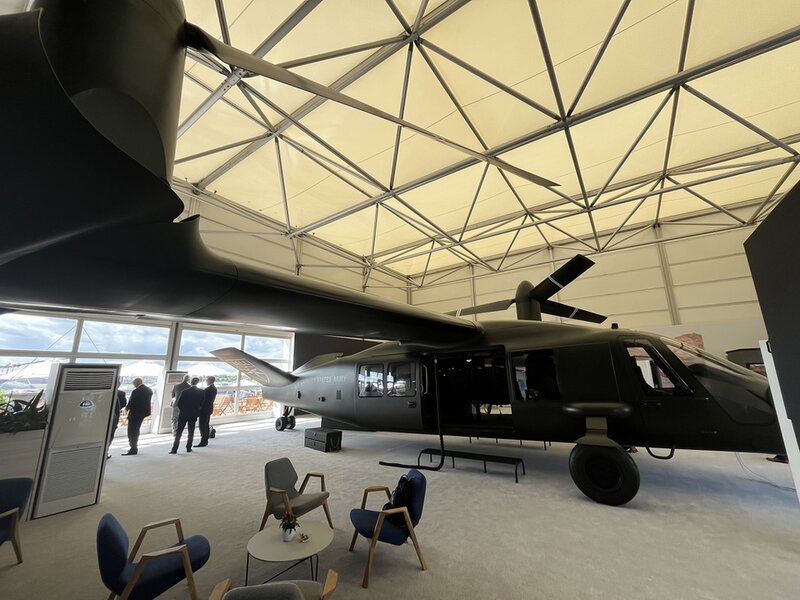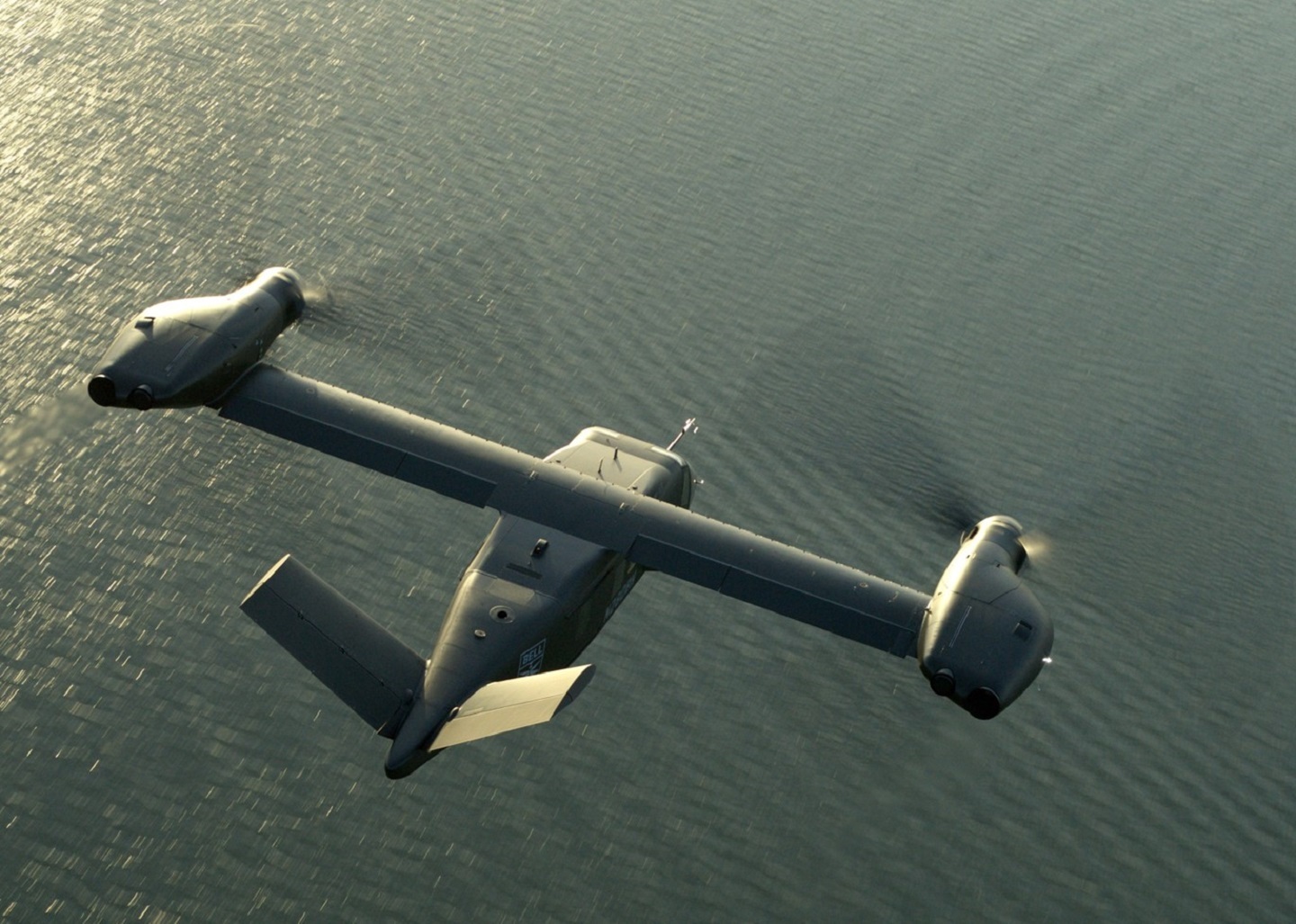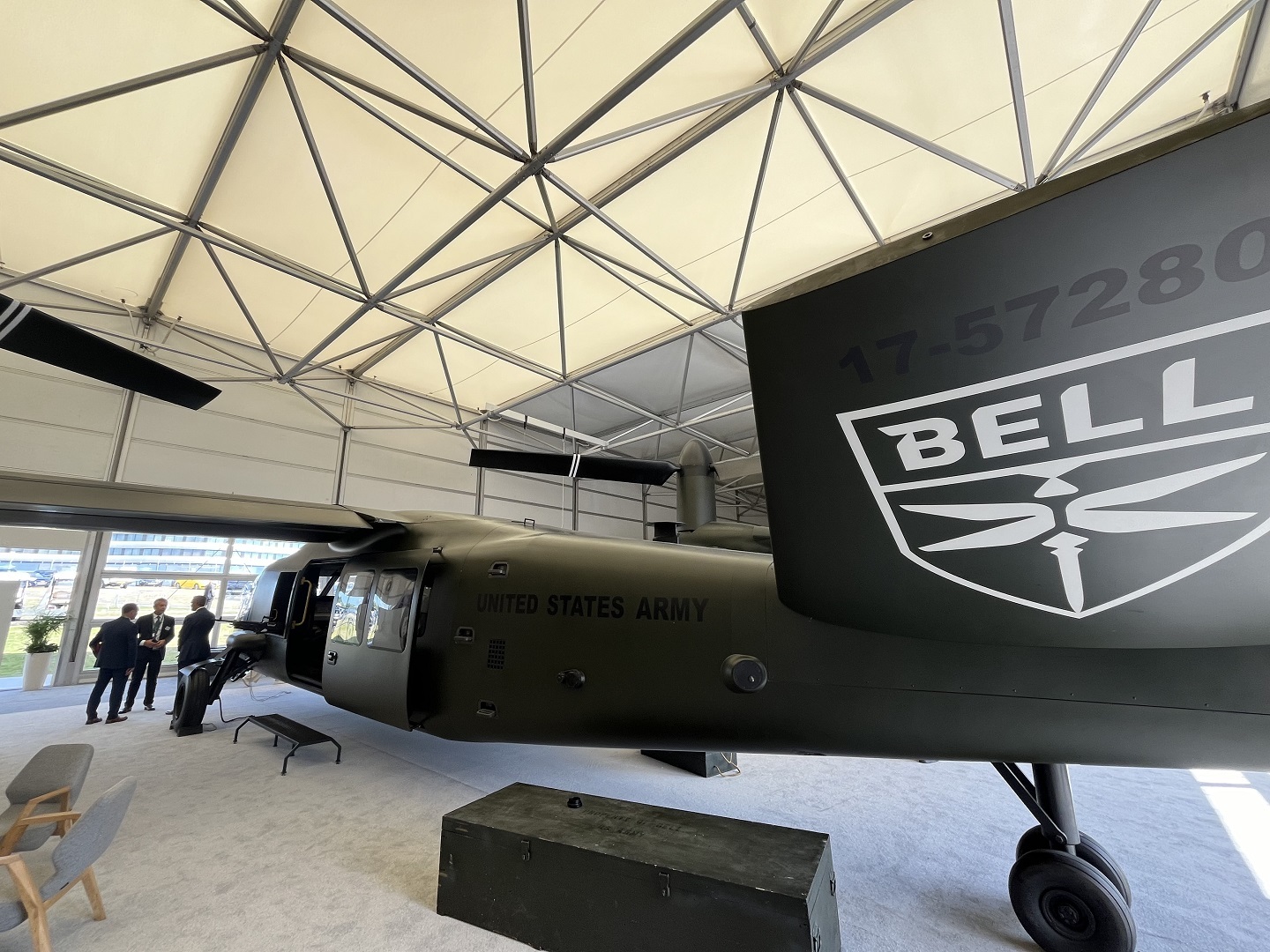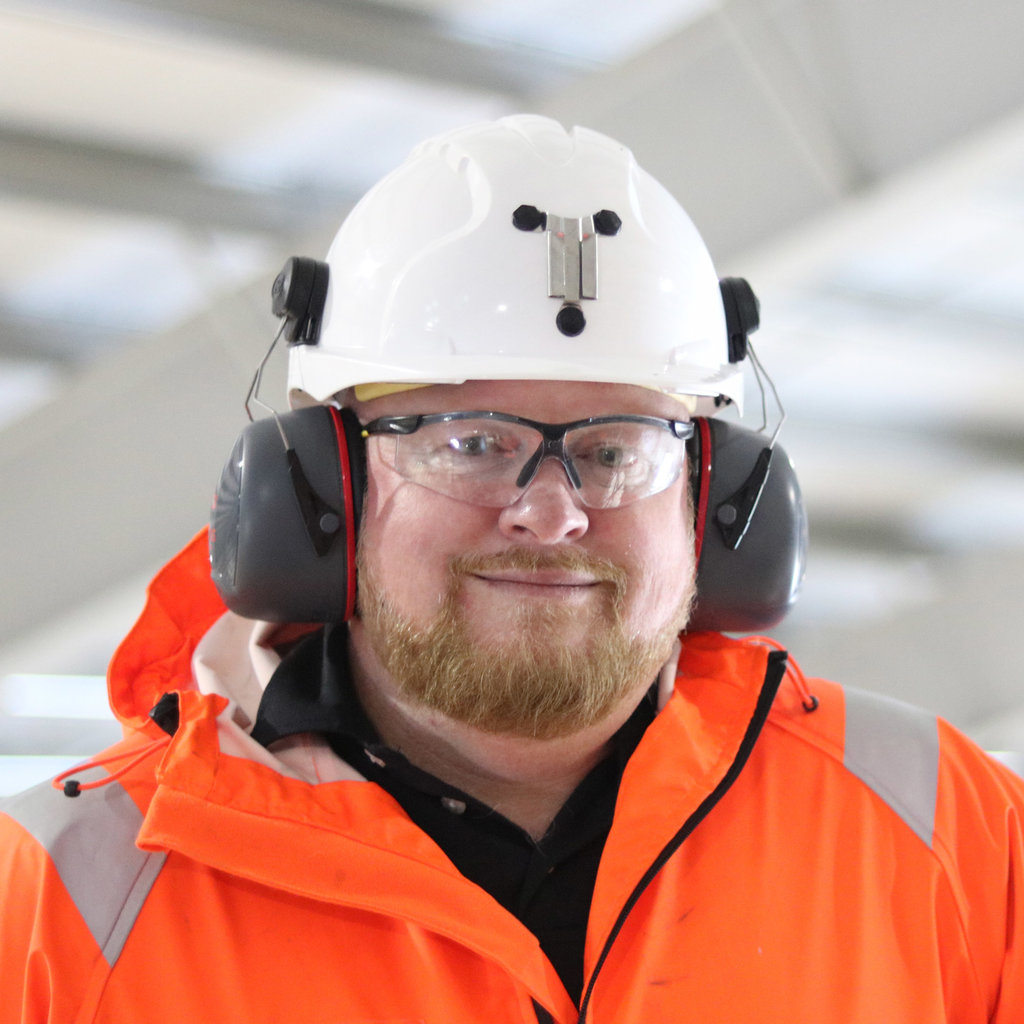Interview
FLRAA: programme progress and global impact
Frank Lazzara, director of Advanced Vertical Lift Systems Sales and Strategy at Bell Texton, shares insights on the Future Long-Range Assault Aircraft programme's progress and prospects. Harry McNeil reports.

The V-280 Valor demonstrator aircraft has already demonstrated its capabilities by achieving a top speed of 305 knots and showcasing agility. Credit: Harry McNeil
Bell leads the Future Long-Range Assault Aircraft (FLRAA) programme, a key next-generation air mobility capability for the US Army. In an interview, Frank Lazzara, director of Advanced Vertical Lift Systems Sales and Strategy at Bell, revealed developments and plans for the programme.
The FLRAA programme’s timeline has already seen Lockheed Martin’s Sikorsky and its partner Boeing filing a formal protest against the US Army's decision to award the contract to Bell Textron's V-280 Valor.
However, the US Government Accountability Office denied the protest in April 2023. The FLRAA programme, aiming to replace the ageing UH-60 Black Hawk by 2030, chose the V-280 Valor over Sikorsky's SB>1 Defiant X, securing a contract valued at approximately $7.1bn.
On 5 August 2024, Bell Textron received US Army approval for the Milestone B decision on FLRAA, marking the transition into the engineering and manufacturing development phase. This approval initiates the creation and testing of FLRAA prototypes, aiming to replace the ageing Black Hawk fleet with a next-generation assault aircraft capable of flying twice as fast and far as current helicopters.
The US Army’s FY2024 budget allocates over $1bn for the production of six prototypes. The FLRAA project utilises advanced tiltrotor technology and digital engineering, with Bell Textron investing in new facilities and processes to support the programme.
Performance metrics
Bell Textron’s ongoing collaboration with the US Army has been vital in the FLRAA programme's continued development.
Lazzara emphasised the integration of efforts, stating: "The collaboration started long before we were on this contract back during the Joint Multi-Role Technology Demonstrator phase. It was essential to showcase our capabilities as a reliable partner for a future programme.
“Now, under a formal contract, we're operating in a shared digital environment with the US Army, facilitating an open exchange of information. Everybody's in the same environment, looking at the same data, evaluating it, making suggestions. The collaboration has gone exceptionally well, with the digital framework being a significant factor."
From a speed range perspective, [V-280 Valor is] more than twice as fast and will have twice the range of a modern Blackhawk helicopter.
Frank Lazzara, director of Advanced Vertical Lift Systems Sales and Strategy at Bell Textron
The FLRAA programme aims to surpass the capabilities of existing military aircraft. While specific numbers remain classified, Lazzara noted: "From a speed range perspective, [V-280 Valor is] more than twice as fast and will have twice the range of a modern Black Hawk helicopter."
The V-280 Valor demonstrator aircraft has already showcased capabilities, including achieving 305 knots of true airspeed.
FLRAA is designed for various missions, from long-range assaults to humanitarian assistance. Lazzara highlighted its potential, particularly in disaster relief, citing past successes with the V-22 Osprey. "The V-22 has really shined in Japan, Haiti, numerous other places around the world. The response time from the initial catastrophe or disaster is greatly shortened by tilt rotor."
For medevac missions, the FLRAA's speed and range are game changers. "Being able to go to the point of injury or near point of injury and then being able to fly them directly to a higher level of care. The difference is really immeasurable."
The US’s procurement programmes, such as the UH-60 Black Hawk and FLRAA, drive major investment in the transport and utility helicopter segment, according to “The Global Military Rotorcraft Market 2023-2033” report.
Leveraging past experience
The FLRAA project utilises advanced tiltrotor technology and digital engineering, with Bell investing in new facilities and processes to support the programme. The US Army’s FY2024 budget allocates over $1bn for the production of six prototypes.
That (V-22) gave us a huge leg up, just from a risk reduction perspective.
Frank Lazzara, director of Advanced Vertical Lift Systems Sales and Strategy at Bell Textron
While the actual FLRAA aircraft is yet to be built, the V-280 Valor has laid a foundation. "We demonstrated 305 knots flight, cruising at 11,000 feet, and we demonstrated a basic autonomous flight. It was pretty successful - we have recorded about 215 flight hours," Lazzara recounted.
This successful demonstration phase has reduced technological risk, paving the way for the FLRAA's future development.
Bell's history with tilt-rotor technology, particularly the V-22, has been invaluable. "We were not on our first iteration of trying to prove out a technology. There were definitely lessons learned as we applied that aircraft, that gave us a huge leg up, just from a risk reduction perspective."

The engineering and manufacturing development phase for Bell’s Future Long Range Assault Aircraft programme has commenced. Credit: Bell
This accumulated knowledge has informed the FLRAA's design, ensuring it meets the requirements of modern military operations while avoiding past pitfalls.
Global potential and future prospects
Bell is committed to providing support as the US Army prepares to transition to the FLRAA platform. "We have agreed to provide a lot of intellectual property along with this design, showing training that answers the question of how you will train aircrew and maintainers to have an operational capability at their initial stand-up."
We've been out there communicating with our key security cooperation partners, especially the UK
Frank Lazzara, director of Advanced Vertical Lift Systems Sales and Strategy at Bell Textron
CAE has partnered with Bell Textron to support the FLRAA programme by providing training aids, simulators, and simulations for the Valor. GE Aerospace was also selected to develop a common open architecture digital backbone for the V-280.
Looking beyond the US Army, the FLRAA has the potential to be adopted by allied forces. "We've been out there communicating with our key security cooperation partners, especially the UK... the modular, open systems approach, I think, will be a big multiplier."
The groundwork has been laid while formal licensing for international sales is pending. "If we execute, then our key security cooperation partners will take note and say, 'Okay, this is going to happen, and it is going to be within our cost objectives.’”

Bell is dedicated to offering assistance as the US Army gets ready to shift to the FLRAA platform. Credit: Harry McNeil
Lazzara's insights paint a picture for the FLRAA programme. As highlighted, the collaboration, technological advancements, and operational benefits of the FLRAA will enhance US Army operations and inevitably attract global interest.
Caption. Credit:

Phillip Day. Credit: Scotgold Resources
Total annual production
Australia could be one of the main beneficiaries of this dramatic increase in demand, where private companies and local governments alike are eager to expand the country’s nascent rare earths production. In 2021, Australia produced the fourth-most rare earths in the world. It’s total annual production of 19,958 tonnes remains significantly less than the mammoth 152,407 tonnes produced by China, but a dramatic improvement over the 1,995 tonnes produced domestically in 2011.
The dominance of China in the rare earths space has also encouraged other countries, notably the US, to look further afield for rare earth deposits to diversify their supply of the increasingly vital minerals. With the US eager to ringfence rare earth production within its allies as part of the Inflation Reduction Act, including potentially allowing the Department of Defense to invest in Australian rare earths, there could be an unexpected windfall for Australian rare earths producers.
